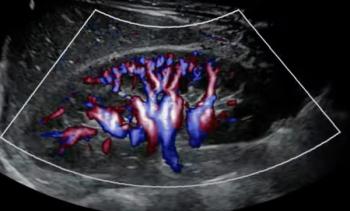
Endovascular aortic aneurysm repair provides appropriate treatment for high-risk patients
Abdominal aortic aneurysms can successfully be treated in high-risk patients with elective endovascular repair, according to a study published in the February issue of the Journal of Vascular Surgery. Researchers found that U.S. military veterans who underwent the procedure fared well compared with those treated with open surgery, even when patients were considered high risk.
Abdominal aortic aneurysms can successfully be treated in high-risk patients with elective endovascular repair, according to a study published in the February issue of the Journal of Vascular Surgery. Researchers found that U.S. military veterans who underwent the procedure fared well compared with those treated with open surgery, even when patients were considered high risk.
Data were obtained by reviewing records from the VA National Surgical Quality Improvement Program, the largest prospectively collected surgical database representing current clinical practice in the U.S.
"Our results show that EVAR should be recommended, provided, and possibly reimbursed for high-risk patients," sai lead author Dr. Ruth Bush, a professor of surgery at Baylor College of Medicine. High-risk criteria included being over 60 years of age, American Society of Anesthesiology classification of 3 or 4, and comorbidity factors such as history of cardiac, respiratory, or hepatic disease.
High-risk EVAR patients had improved survival and shorter hospital stays compared with patients undergoing open repair. EVAR patients experienced statistically significantly lower 30-day and one-year all-cause mortality rates. The risk of perioperative complications was significantly lower after EVAR. Further examination of very high-risk patients, those classified as ASA category 4 in addition to comorbidity variables, demonstrated an acceptable 30-day mortality rate, according to researchers.
While previous retrospective studies focused on a single institution, this report analyzed 788 cases from 123 sites. In previous prospective randomized trials, the benefits of EVAR for high-risk patients were questionable. This apparent inconsistency was possibly due to study design problems, such as excluding high-risk patients from the randomization process, according to the authors.
"Some people still consider EVAR experimental," Bush said. "But we speculated that EVAR would be appropriate for high-risk patients, and now we have the data to support that."
Abdominal aortic aneurysms develop when vessel walls weaken and then bulge, threatening to rupture. Traditional open repair requires opening the abdomen, excising the damaged area, and replacing it with a synthetic tube. Minimally invasive EVAR involves guiding a stent-graft to the damaged region via the femoral artery in the groin. The stent-graft reinforces the weakened walls, preventing rupture without invasive surgery.
For more information from the Diagnostic Imaging archives:
Newsletter
Stay at the forefront of radiology with the Diagnostic Imaging newsletter, delivering the latest news, clinical insights, and imaging advancements for today’s radiologists.




























